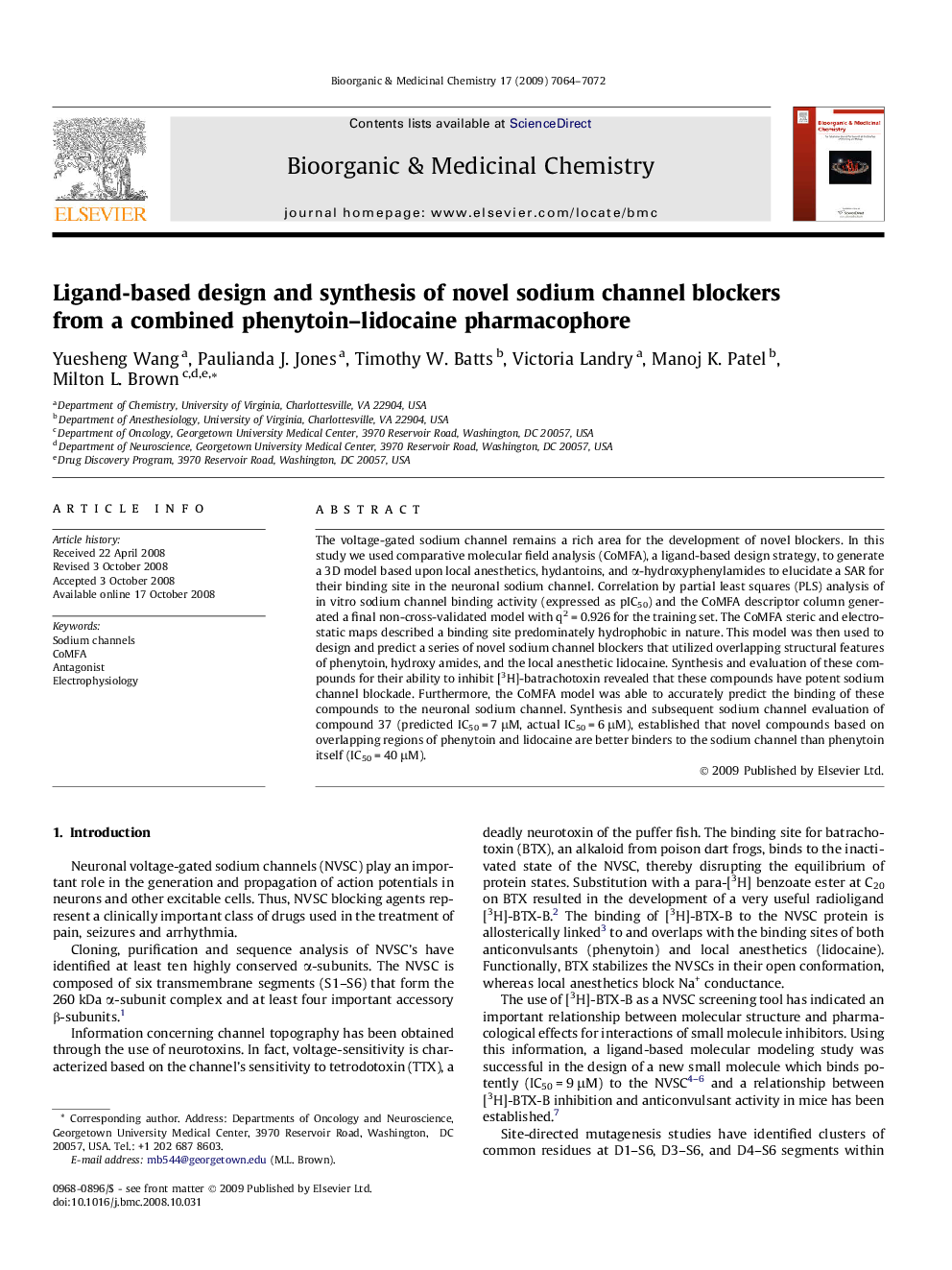| کد مقاله | کد نشریه | سال انتشار | مقاله انگلیسی | نسخه تمام متن |
|---|---|---|---|---|
| 1360179 | 981427 | 2009 | 9 صفحه PDF | دانلود رایگان |

The voltage-gated sodium channel remains a rich area for the development of novel blockers. In this study we used comparative molecular field analysis (CoMFA), a ligand-based design strategy, to generate a 3D model based upon local anesthetics, hydantoins, and α-hydroxyphenylamides to elucidate a SAR for their binding site in the neuronal sodium channel. Correlation by partial least squares (PLS) analysis of in vitro sodium channel binding activity (expressed as pIC50) and the CoMFA descriptor column generated a final non-cross-validated model with q2 = 0.926 for the training set. The CoMFA steric and electrostatic maps described a binding site predominately hydrophobic in nature. This model was then used to design and predict a series of novel sodium channel blockers that utilized overlapping structural features of phenytoin, hydroxy amides, and the local anesthetic lidocaine. Synthesis and evaluation of these compounds for their ability to inhibit [3H]-batrachotoxin revealed that these compounds have potent sodium channel blockade. Furthermore, the CoMFA model was able to accurately predict the binding of these compounds to the neuronal sodium channel. Synthesis and subsequent sodium channel evaluation of compound 37 (predicted IC50 = 7 μM, actual IC50 = 6 μM), established that novel compounds based on overlapping regions of phenytoin and lidocaine are better binders to the sodium channel than phenytoin itself (IC50 = 40 μM).
Figure optionsDownload as PowerPoint slide
Journal: Bioorganic & Medicinal Chemistry - Volume 17, Issue 19, 1 October 2009, Pages 7064–7072